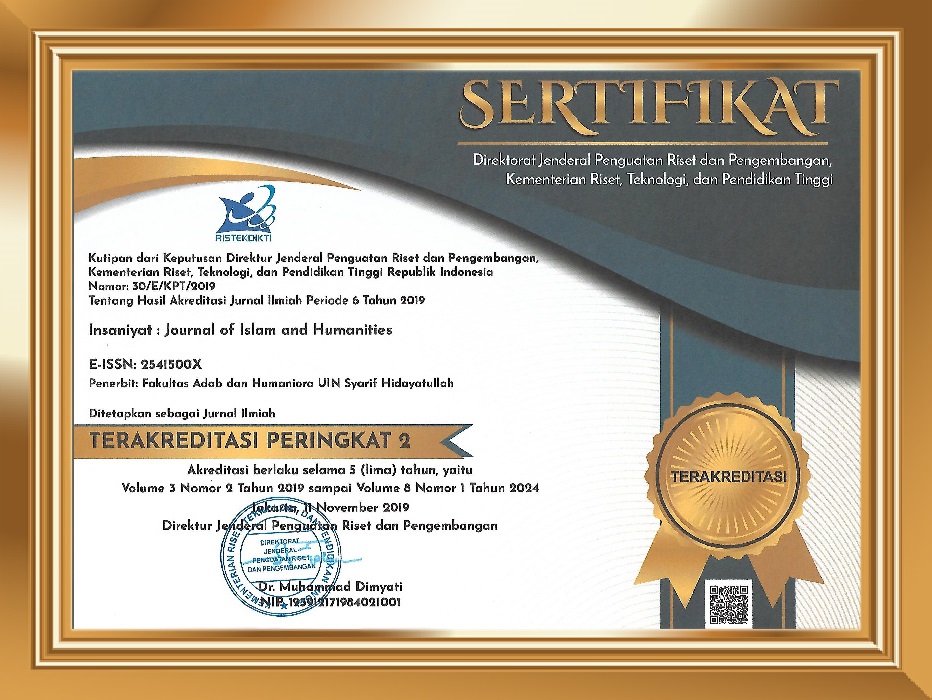Translation Strategy of Proper Name
Abstract
Massive discussion has been done related to the translation strategy, including the proper name. This study discussed the types of a proper name and the translation strategy of a proper name in an English-Indonesian Novel Harry Potter and The Chamber of Secret. The data will be presented qualitatively by using Peter Newmark and Lincoln Fernandes theories. Six data are frequently typed into addressing name, four are typed as a geographical place, and one as an object name. Moreover, the most strategies used to engage the equivalence effect are copy strategy with seven data, rendition strategy with three data, and re-creation strategy with one datum. Therefore, the copy strategy can be a solution to deliver proper names into TL because it preserves the proper name and introduces the foreign name of foreign culture to the target language and target culture. Moreover, if a proper name has its equivalence meaning in TL, it might be translated by rendition strategy.
Keywords
References
Aguilera, E. C. (2008). The translation of proper names in children’s literature. Ef@ tabulations/Ef@ bulações. p.3.
Baker, M. (2003). Routledge encyclopedia of translation studies. Routledge.
Catford, J. C. (1978). A linguistic theory of translation. Oxford University Press.
Vinay, J. P., &Darbelnet, J. (1989). Translation procedures. Readings in translation theory, 61-69.
Davies, E. E. (2003). A goblin or a dirty nose? The treatment of culture-specific references in translations of the Harry Potter books. The Translator, 9(1), 65-100.
Farkhan, M. (2015). Proposal penelitian Bahasa dan sastra (Edisirevisi).
Fernandes, L. (2006). Translation of names in children’s fantasy literature: Bringing the young reader into play. New voices in translation studies, 2(2), 44-57.
Hermans, Theo. On Translating Proper Names, concerning De Witte and Max Havelaar”, in M. J. Wintle (ed.) Modern Dutch Studies. Essays in Honour of Professor Peter King on the Occasion of his Retirement, 1-24, London/Atlantic Highlands: The A. London/Atlantic Highland: The Athlone Press,1988. E-Book.
Huddleston, Rodney. English grammar: An outline. Cambridge: Cambridge University Press, 1988. Print.
Jaleniauskienė, Evelin, and Vilma Čičelytė. “The Strategies for Translating Proper Names in Children’s Literature. No.15” (2009): 31-42. E-Journal.
John, Ring. “Common and Proper Nouns.” Internet Grammar of English. The Survey of English Usage. 1996-1998. Web. 21 September 2017.
Loescher, W. Translation performance, translation process, and translation. Tuebingen: GutenNarr, 1991. Print.
Newmark, Peter. A Text Book of Translation. United Kingdom: Prentice Hall International, 1988. Print.
—. Approaches to Translation. New York: Prentice Hall International, Ltd, 1988. E-Book.
Nord, Christiane. "Proper Names in Translations for Children: Alice in Wonderland as a Case in Point" (2003): 185. E-Journal.
Quirk, et al. A Grammar of Contemporary English. Singapore: Longman Group, Ltd, 1972. E-Book.
Rodriguez, Vicente. "Majorca".Encyclopaedia Britannica. Encyclopaedia Britannica, inc., 04 Feb 2015. Web. 13 Feb 2018. .
Sabzalipour, Mozhgan., Kian Pishkar. “The Translation Strategies of Proper Nouns in Children’s Literature (Volume 2 Issue 6).” (2015): 73-79. E-Journal.
Shirinzadeh, Mahadi&. "Translating Proper Nouns: A Case Study on English Translation of Hafez’s Lyrics." (2014): 8-16. E-Journal.
Sugiarto, Eko. Menyusun Proposal PenelitianKualitatif: SkripsidanTesis: Suaka Media. Yogyakarta: Suaka Media, 2015. Print.
Vermes, Albert Peter. Proper Names in Translation: A Relevance-Theoretic Analysis.n.p, 2001. E-Book.Zarei, Rouhollah . "Proper Nouns in Translation: Should be Translated or Not?". International Jornal of Linguistics and Literature (2014).E-Journal.
DOI: 10.15408/insaniyat.v3i2.8668
Refbacks
- There are currently no refbacks.






